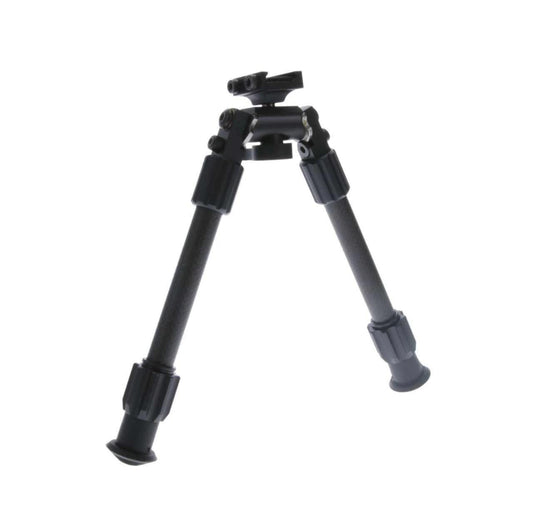

Truglo TAC-POD Carbon Pro Bi Pod - 9-13" Sling Swival Stud provides essential stability for shooters demanding lightweight and high performance. Constructed with carbon fiber legs, this bipod is perfect for tactical and hunting scenarios, allowing for precise shooting with full pan tilt and level control. Its adjustable leg length accommodates various shooting styles, ensuring you can maintain a steady aim regardless of the environment. This bipod is engineered for reliability, making it an ideal accessory for both bolt action rifles and larger firearms.
Designed for ease of use, the TAC-POD enhances your shooting posture with its optimal height. The rugged construction ensures it withstands tough conditions, while the compact design allows for convenient transport. Spend less time setting up and more time focusing on your target with this practical bipod.
Features:
- LIGHTWEIGHT CARBON FIBER for easy transport without sacrificing durability.
- FULL PAN TILT CONTROL allows for smooth adjustments, improving accuracy.
- ADJUSTABLE LEG LENGTH (9-13") fits a range of shooters and rifle sizes.
- SWIVEL STUD MOUNT provides secure attachment to your rifle, ensuring stability.
- COMPACT DESIGN fits easily in your gear, ready for any adventure.
- OPTIMAL HEIGHT enhances shooting posture, making long-range shots easier.
- RUGGED CONSTRUCTION withstands harsh conditions and heavy use.
- EASY SETUP means you can spend less time adjusting and more time shooting.
Technical Specifications Table
| Specification | Details |
|---|---|
| Leg Length | 9-13 inches |
| Material | Carbon Fiber |
| Weight | Lightweight |
| Compatibility | Most tactical and hunting rifles |
What’s in the Box?
- Truglo TAC-POD Carbon Pro Bi Pod
- Installation Instructions
Customer Reviews
"The TAC-POD is incredibly sturdy and lightweight. A must-have for serious shooters!"
"I love how easy it is to set up and adjust. Perfect for my hunting trips!"
FAQ
Q: How stable is the Truglo TAC-POD in windy conditions?
A: The carbon fiber legs provide excellent stability, even in less-than-ideal weather, ensuring your shots remain precise.
Q: Can I use this bipod with a heavy rifle?
A: Yes, the TAC-POD is designed to support a variety of rifles, including heavy bolt actions, giving you the versatility you need.
Similar Models
Looking for more options? Explore our full range of Truglo products, including the Truglo TAC-POD Carbon Pro Bi Pod - 6-9" for compact versatility and the Truglo TAC-POD Elite Bi Pod for enhanced features. Discover the complete collection and elevate your shooting experience today!
You May Also Like
Here’s some of our most similar products people are buying. Click to discover trending style.









